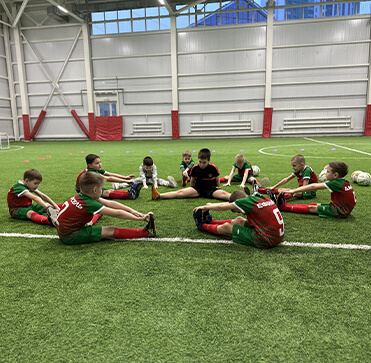CRFC BLOGS
LATEST BLOGS & NEWSLETTERS
Effective Soccer Injury Prevention Techniques Every Player Should Know
Soccer involves jumping, turning, accelerating, decelerating, pivoting, and kicking the ball. It is a physically demanding sport and can lead to different injuries. The most common injuries while playing soccer are strains, bruises, sprains, dislocations, and fractures. But there are various steps that you can take to avoid these injuries. Soccer injury prevention is more about being proactive and mindful to minimize the risk of injuries.
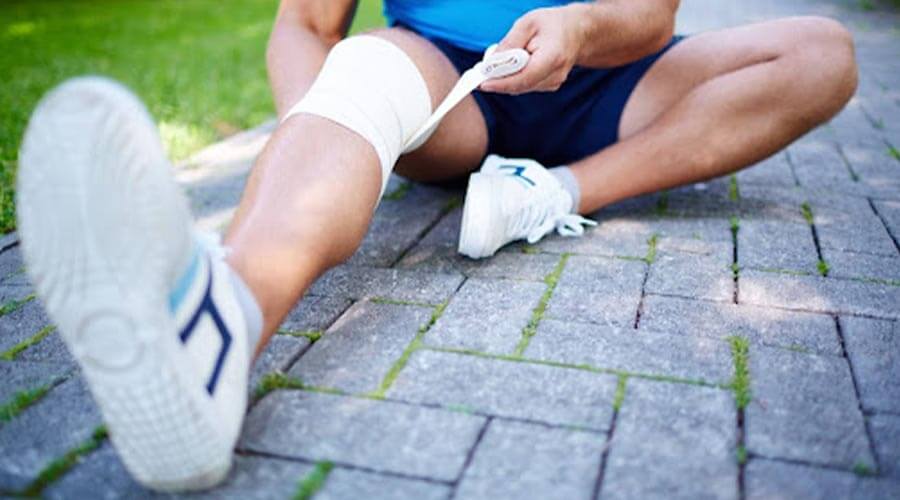
Soccer is a contact sport and injuries can always happen. To ensure things are as safe as possible while playing soccer, follow these effective techniques:
Proper Warm-up and Stretching
Playing soccer without a proper warm-up can be risky and potentially damaging. A structured warm-up routine spans at least 15 minutes. Warming-up prepares the body for optimal performance and reduces the likelihood of injuries.
- Warm up your body with light cardiovascular exercises like jogging or skipping for 5-10 minutes. This increases your heart rate and blood flow, preparing your body for more intense activity.
- Perform dynamic stretches that mimic soccer movements. This helps improve flexibility and range of motion and increases blood flow to the muscles for activity.
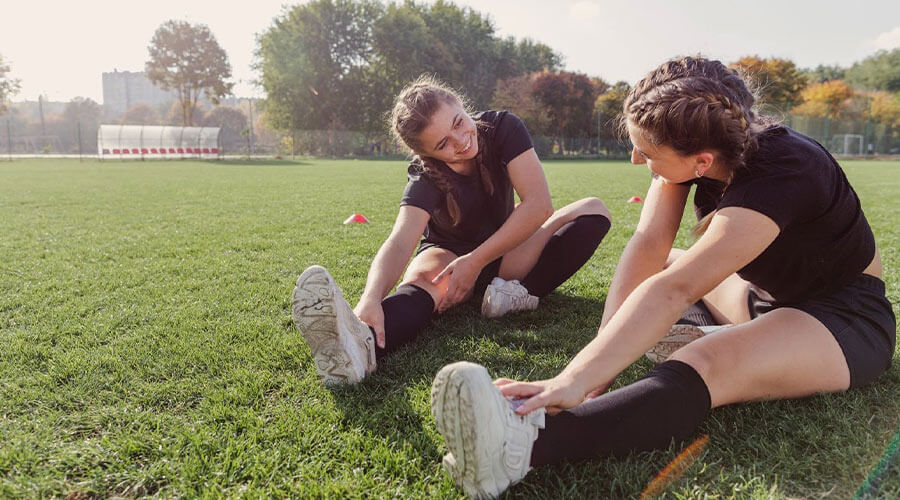
Strength Training
Building a strong body is key to soccer sports injury prevention. Incorporating strength training exercises into your training routine is crucial for strengthening muscles and promoting overall stability.
- Include strength training exercises in your fitness routine to build muscle strength.
- Include exercises that simulate soccer movements, such as lunges, squats, and leg presses, to build strength specific to the sport.
- Focus on the core, legs, and other muscle groups used in soccer to provide better support and stability.
Balance and Coordination Exercises
- Stand on one leg, use wobble boards, or perform exercises on uneven surfaces to enhance balance.
- Incorporate ladder drills, cone drills, and shuttle runs to improve balance and coordination, which can help prevent awkward movements and falls.
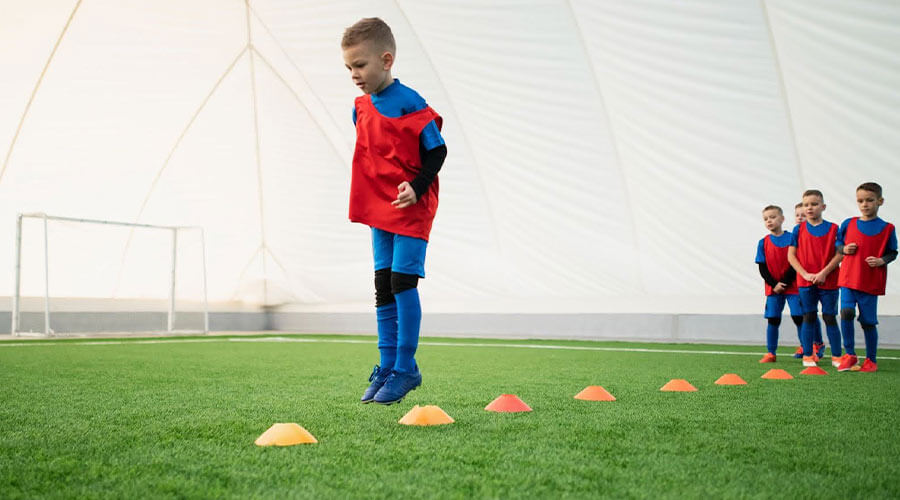
Correct Technique
While the focus in soccer is to score goals, gaining a proper grip on the basics is also important for injury prevention. Players must pay attention to passing, shooting, and tackling techniques, ensuring they are executed with precision and proper form. Incorrect form can strain muscles and joints, enhancing the risk of injuries.
- Ensure that you are using the proper technique for all soccer-related movements, including shooting, passing, and tackling.
- Reviewing video footage of your play can help identify and correct any biomechanical issues or improper techniques.
- Work with coaches to refine your skills and reduce the risk of injury due to improper form
Use Protective Gear
- Wear well-fitted shin guards to protect against kicks and impacts during games and training sessions.
- Use soccer cleats with the right stud configuration for the playing surface to prevent slips and falls.
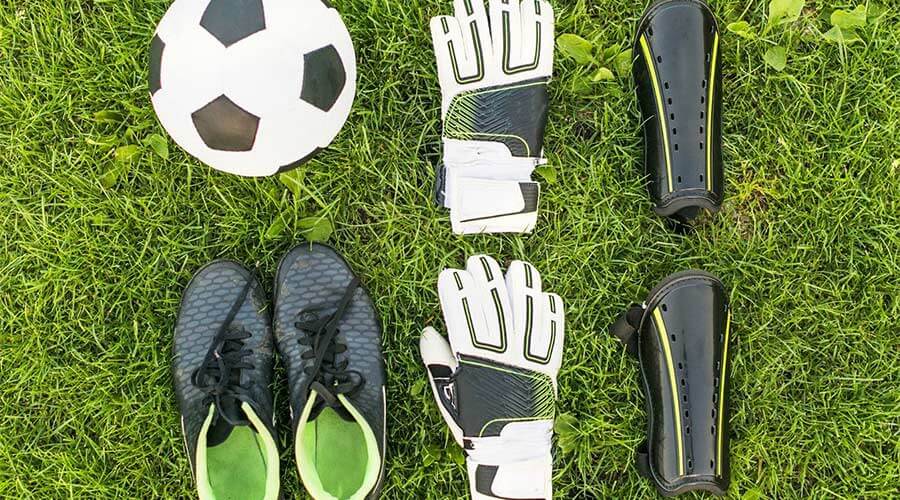
Hydration and Nutrition
- Hydration: Drink water before, during, and after training and games to prevent dehydration, which can contribute to muscle cramps and fatigue.
- Nutrition: Maintain a balanced diet with an emphasis on carbohydrates for energy, protein for muscle repair, and a variety of vitamins and minerals for overall health.
Adequate Rest and Recovery
The significance of adequate rest is underestimated when it comes to soccer. Soccer places immense physical demands on the body, and overtraining can lead to fatigue and increased vulnerability to injuries.
- Ensure you get enough rest between training sessions and games to allow your body to recover.
- Schedule rest days between intense training sessions or games to prevent overtraining and reduce the risk of overuse injuries.
- Listen to your body, and don’t push yourself too hard without adequate recovery time.
- Ensure you get sufficient sleep to allow your body to recover and repair tissues.
Medical Check-ups
Soccer players must regularly consult with a healthcare professional to address any existing injuries or concerns. Soccer injuries and treatment are essential topics for both coaches and players to understand, ensuring proper care and rehabilitation after any on-field mishaps. If you have existing injuries, follow the prescribed rehabilitation plan to prevent re-injury and strengthen the affected areas.

Conditioning
- Increase the intensity and duration of your workouts gradually to allow your body to adapt and reduce the risk of acute injuries.
- Incorporate interval training to improve cardiovascular fitness and match the intermittent nature of soccer.
Pre-Season Fitness
- Use the pre-season to gradually increase the intensity and volume of your training, allowing your body to adapt to the demands of the upcoming season. This can help prevent injuries that may occur when returning to physical activity after a period of inactivity.
- Include soccer-specific drills and exercises to simulate in-game movements.
Join us for practical sessions designed to prepare you physically for the challenges of the upcoming season.
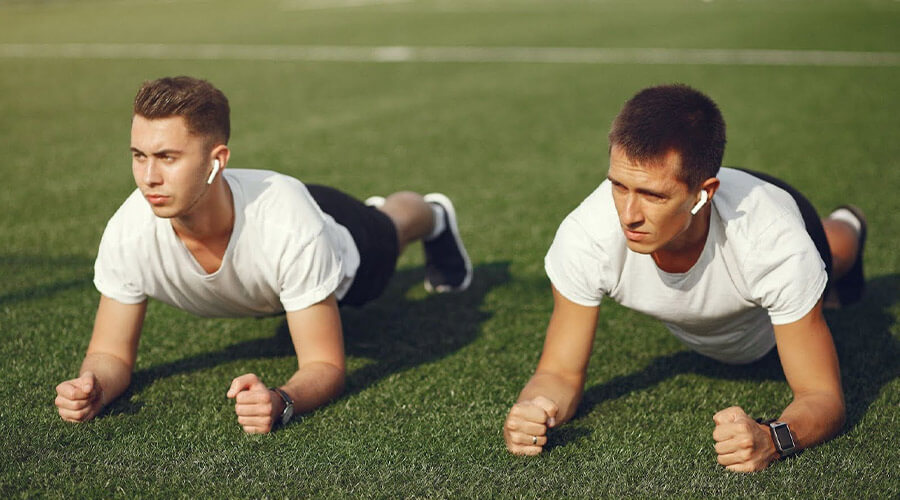
Conclusion
Remember, injury prevention is a combination of multiple factors, and a holistic approach that includes physical preparation, proper technique, and lifestyle choices can significantly reduce the risk of soccer-related injuries.
By incorporating these detailed strategies into your soccer routine, you can significantly reduce the risk of injuries and enhance your overall performance on the field.
FAQs
How can injuries be prevented in soccer?
Injuries in soccer can be prevented by implementing proper warm-up routines, strength training exercises, balance and coordination drills, focusing on correct technique, using protective gear like shin guards and cleats, maintaining hydration and nutrition, ensuring adequate rest and recovery, undergoing regular medical check-ups, conditioning gradually, and participating in pre-season fitness programs.
What is the first aid for a soccer injury?
The first aid for a soccer injury typically involves following the R.I.C.E. protocol: Rest, Ice, Compression, and Elevation. Additionally, seeking medical attention for proper diagnosis and treatment is essential for more severe injuries.
What are the 3 areas of injury prevention?
The three areas of injury prevention in soccer encompass physical preparation (including warm-up, strength training, balance, and coordination exercises), proper technique execution, and lifestyle choices (such as hydration, nutrition, rest, and recovery).
Why is sports injury prevention important?
Sports injury prevention is crucial for maintaining athlete health and well-being, reducing the risk of acute and overuse injuries, minimizing time lost due to injuries, improving performance, and ensuring longevity in sports participation.
What is injury prevention in Soccer?
Injury prevention in soccer involves a comprehensive approach aimed at reducing the risk of injuries through measures such as warm-up routines, strength training, balance exercises, correct technique execution, use of protective gear, hydration and nutrition, rest and recovery, regular medical check-ups, gradual conditioning, and participation in pre-season fitness programs.

Did you find this useful?


